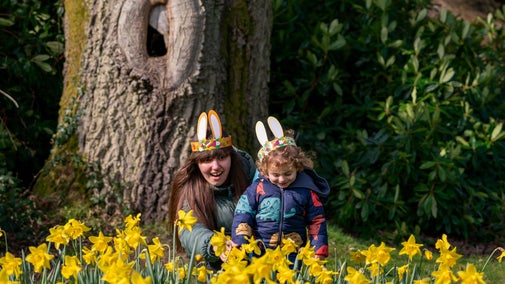
Discover more at Wray
Find out when Wray is open, how to get here, the things to see and do and more.

Discover more about the history of the Wray Castle estate and the fascinating link that Hardwicke Rawnsley, one of the National Trust's three original founders, had with the property.
In 1895 the National Trust was founded by three exceptional leaders: Octavia Hill, Sir Robert Hunter and Canon Hardwicke Rawnsley, who were united by a belief that beautiful, natural and historic places were worth protecting for future generations.
Almost 20 years previously, Hardwicke Rawnsley, aged 26, had moved to Cumbria to take up the position of Vicar at Wray Church in the Wray Castle estate, and threw himself into life in the local community. He became increasingly concerned about the rapid scale of modern development in the Lake District, and was determined to protect its beauty.
In 1882 a young Beatrix Potter holidayed in the Lake District for the first time as her parents had rented out Wray Castle. The family entertained many eminent guests at the castle during that summer and Rawnsley was invited to one of their dinner parties.
He was an authority figure of an entirely different sort to her parents and this meeting was the start of a great friendship between Beatrix and Rawnsley.

Rawnsley was the first published author Beatrix had met. He praised her little drawings and paintings, encouraging her interest in animals and plants. Through years of friendship and mentoring, he went on to help her publish her first book, The Tale of Peter Rabbit.
Rawnsley was keen to seek solutions to the problems of a rapidly industrialising and urbanising society in Britain. Whilst at Wray he began his work to defend the Lake District from slate quarrying and associated road and rail developments, and to ensure that people could get out and enjoy the landscape.
Potter and Rawnsley’s shared legacy has played a huge part in shaping the Lake District that we know and love today.

Find out when Wray is open, how to get here, the things to see and do and more.

Need some refreshment during your visit to Wray? Our partners at JOEY's Café offer a wide range of snacks and drinks to help you refuel before or after your adventures.

If you can see yourself working in the beautiful grounds of Wray Castle or welcoming visitors inside, we might just have a role for you. Find out more about volunteering here.

Discover what family-friendly activities are on offer at Wray parkland and castle, from outdoor walks and lakeside views to a scenic boat cruise across Windermere * *seasonal.

Learn about people from the past, discover remarkable works of art and brush up on your knowledge of architecture and gardens.

From landscape gardeners to LGBTQ+ campaigners and suffragettes to famous writers, many people have had their impact on the places we care for. Discover their stories and the lasting legacies they’ve left behind.